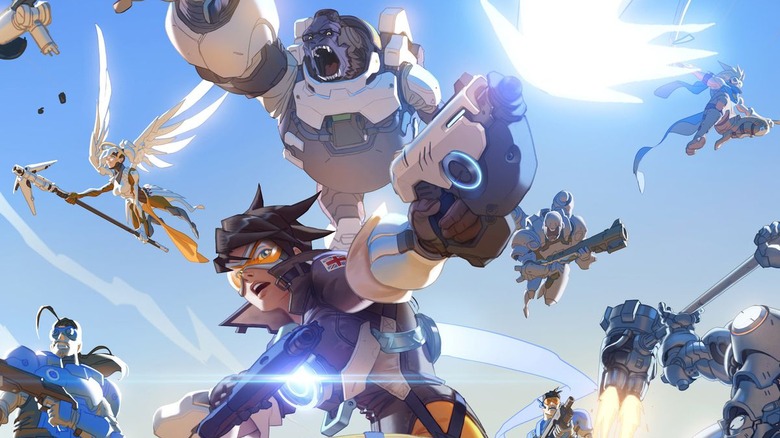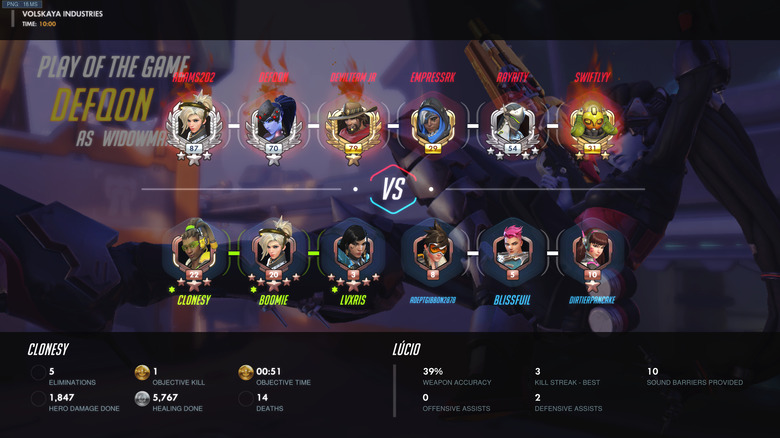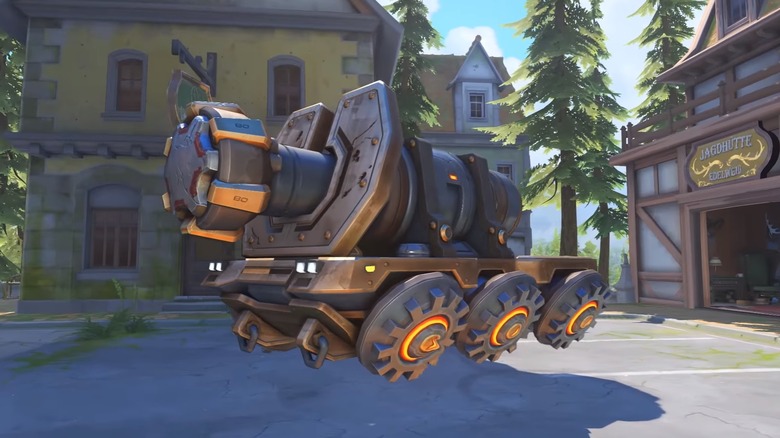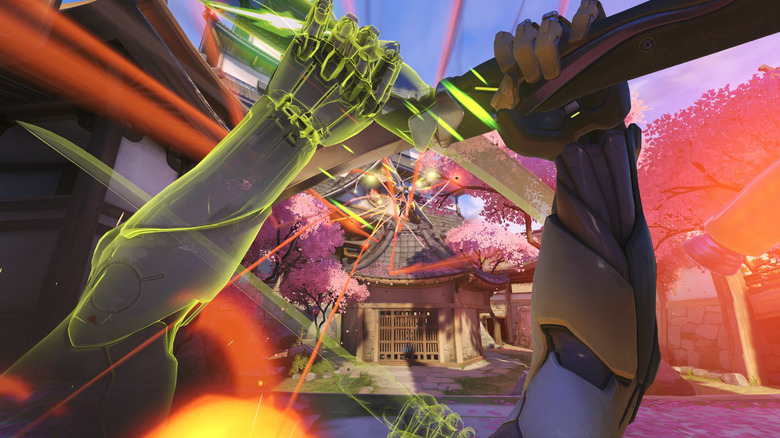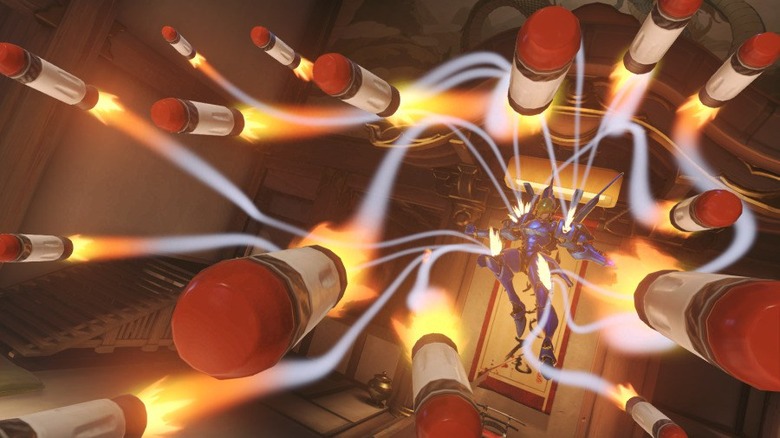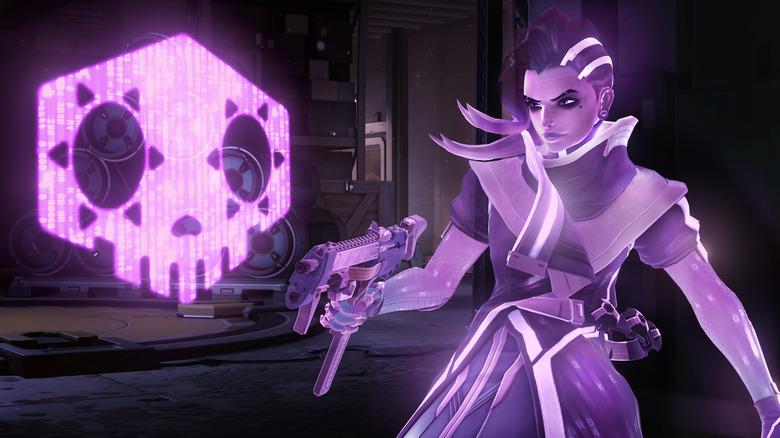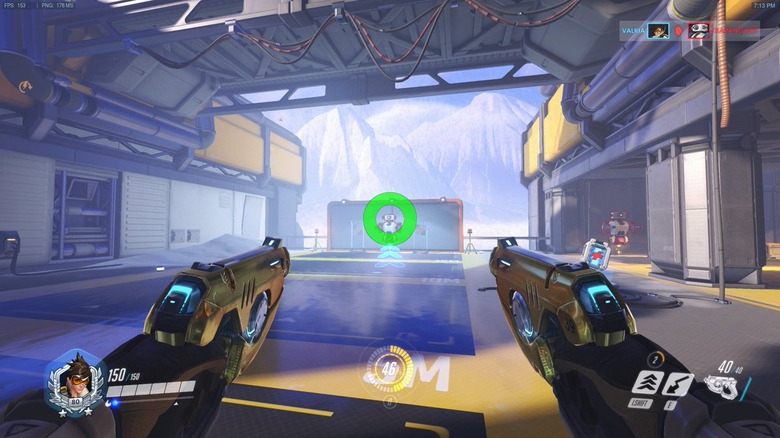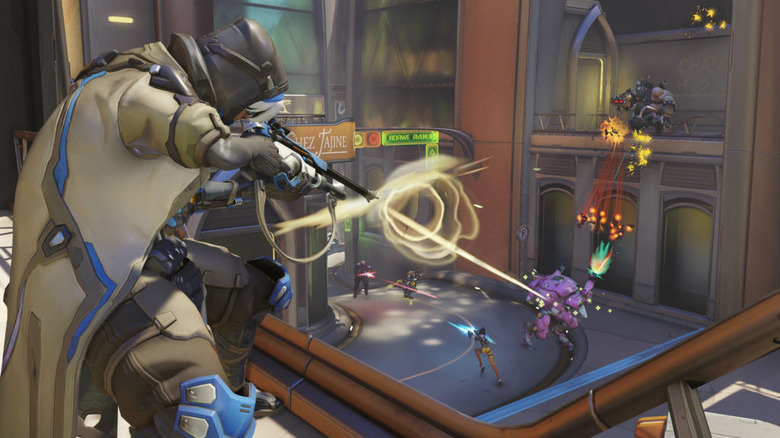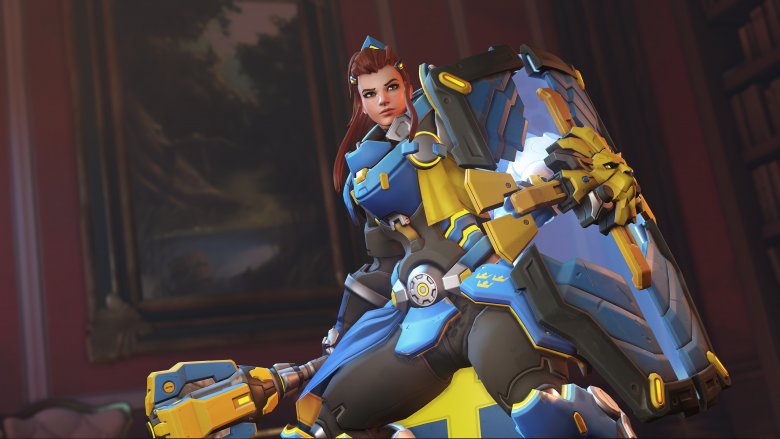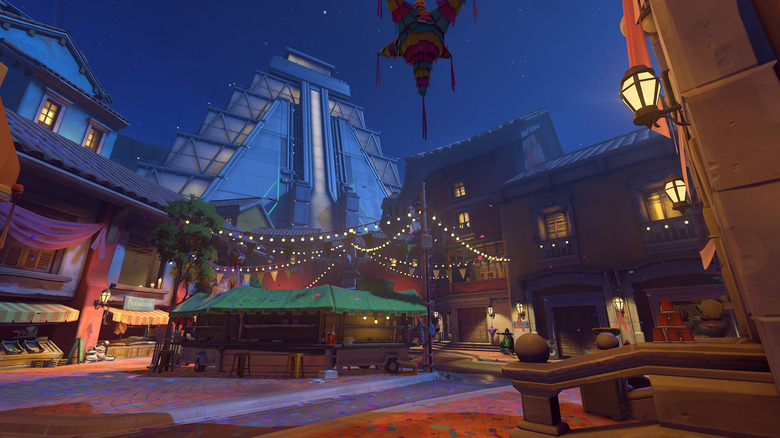False Facts About Overwatch You Thought Were True
When a game gets as popular as Overwatch has, it's tempting to believe that it's all been figured out already. Whatever secrets the game's first players were able to slowly uncover must have been exposed forever ago, and all of the mechanical nuance that separates a casual fan from a competitive player has been broken down to a fine science.
That simply isn't the case, however. Overwatch is successful in part due to its subtle complexities, the stuff that works behind the scenes. It also has some weird features working underneath its glossy sheen that aren't as straightforward as their names make them out to be.
We've decided to shine a light on some of the popular misconceptions players have with Blizzard's hero shooter. Take a gander at our comprehensive list of false facts about Overwatch you thought were true.
Matchmaking is based on your Skill Rating
The placement matches at the beginning of a season of Overwatch are something of a rite of passage. Anyone who has grinded through an entire season of Overwatch will tell you that, while frustrating at times, the experience has made them a better, or at least more intelligent, player, wearing their Skill Rating like a badge of honor.
Then, placement matches happen. Anxiety-fueled nightmares of sweat and taut, mechanical play. Finally, they get their placement — almost always, the exact same place they ended the last season at.
That's because matchmaking, and to a further extent, placement, aren't based on Skill Rating; they're more closely associated with MMR, a hidden algorithm Blizzard uses to determine who it is fair to match players up with while their SR still fluctuates based on their more recent win-loss record. It's a complicated system, but basically, matchmaking has little to do with SR and a lot more with MMR.
Next time you're nervous about placement matches or about SR affecting your opportunities to play, remember that Blizzard's matchmaking is mostly invisible to you. The best solution is probably to relax and just play your best, regardless of whether or not you're getting steamrolled by a team that feels like they're twice the SR rating you are.
The payload needs defenders present to reverse
The payload is one of the most iconic elements in all of Overwatch, a slow, lumbering vehicle that can either bring great joy or terrible sadness depending on whether or not you have a team that has any interest in fighting around it.
The payload needs to have attackers present to begin moving it forward. Naturally, it seems safe to assume that defenders need to be present near the payload for it to push back in the opposite direction, too.
The only thing is, that isn't the case. A Reddit user ran some tests and came away with proof that the payload doesn't actually need a defender present to begin its slow move away from its destination. The cart actually just waits for ten seconds, and if there aren't any attackers present (and regardless if there are defenders nearby) it will simply begin to move back of its own accord.
It's a neat mechanical feature, but it's unlikely to come up too often in-game. It's rare a payload that is completely uncontested by either side, and that kind of scenario usually means there are some other serious issues with team communication.
Genji's deflect doesn't work on melee attacks
Genji's Deflect skill is one of the coolest, most flashy plays in Overwatch when it works. Deflecting a projectile back at an enemy with precision and speed makes you feel like, well, a ninja, which we guess is kind of the point when you're playing a character like Genji.
Deflect explicitly says it works on projectiles, so it makes sense that people think that's the only way it works. In truth, however, Deflect also functions on melee attacks in a useful way: rather than reflecting them, it actually just blocks them instead, provided Genji is facing the direction that the attack is coming from.
Another small thing people might assume about Deflect at first glance is that it always ricochets the projectile back towards an enemy. What Deflect does in practice, however, is return the projectile in the direction that Genji's crosshair is facing when Deflect triggers. That's a lot of nuance to an ability that many people just think is a cool, flashy play, and the knowledge of how to best deploy Deflect is what separates the experienced, tactical Genji players from the newer ones just learning the hero's ins and outs.
Pharah can't move while she's using her ult
For those unfamiliar — and congratulations, you've lived a blessed life — Pharah's ultimate can be absolutely game-breaking when executed to perfection. Sometimes, having a barrage of rockets rained down upon you from formerly clear skies just kind of demoralizes a team.
One of the detriments of Pharah's ultimate is that she is immobile while doing it. The ultimate would be absurd if she could also fly around while it was being executed, so that's not necessarily a bad thing. What most people assume is that Pharah's ultimate can therefore never be done while on the move, however, which is actually false.
Pulling off a Pharah moving ultimate is tricky — and probably more than a little impractical, most of the time — but it is doable. On a map like Volskaya Industries, Pharah can activate her ultimate on a moving platform and continue to move with that platform while the ultimate is occurring.
It's not likely to win you many games, but it might win you a few bets with friends who are convinced you can't get Pharah mobile while her ultimate is going off.
Sombra's EMP only affects other characters
Sombra's EMP is pretty cool: it's the only ultimate that lets the entire team know that it is active with a little image appearing in the bottom right of the screen and a sound notification of Sombra saying "EMP activated." For a character that could easily have just been a stereotypical hacker, the nice touches Blizzard implemented for Sombra really does make her a nuanced, fun character.
EMP is also more flexible than you might have thought, however. While its main use can certainly be on enemy characters, EMP actually affects other things, too. EMP can deactivate various characters' abilities that have already been activated, like Orisa's Supercharger, Symmetra's Sentry Turrets, and Wrecking Ball's Proximity Mines.
Even more interestingly? Sombra's EMP also hacks nearby healthpacks. For a whole minute, hacked healthpacks spawn faster, and are only useable by Sombra's team. It's a flexible, powerful ability that can swing a game without ever firing a shot, and it's something that those learning to play Sombra should become accustomed to as quickly as possible.
Overwatch's UI is inflexible
In tournaments, the user interface is presented as the default. This is likely done to make sure that viewers experiencing professional Overwatch for the first time find it as recognizable and familiar as the screen they are used to playing on.
Overwatch's UI is actually much more flexible than it appears, though. Players are given a decent amount of customization options per character, and although some of them are superficial, others, like reticle changes, are actually quite useful.
Reticles can be customized with both color and shape, and there are various reasons to do so. In terms of color, this customization can help color blind players see their own target better, making them more accurate in-game. It can also help players distinguish their cross-hairs in a frenetic game by having it an unusual color that stands out more.
Reticle shape can be customized to help players improve their aim with certain characters. For characters with abilities that have a wider shot range, for instance, players can select a reticle with a greater width, to help them visualize how their attack will occur in-game.
If you feel like your Overwatch play is beginning to stagnate and haven't done so already, give some UI modification a try. It can make a pretty big difference in gameplay.
Armor reduces damage by a set amount
While there's no disputing that armor is very important to competitive play, it's actually not as straightforward an element as one might think. Whereas other FPS games often use armor as a stat-booster, providing extra health on top of what would normally be the maximum for a character, Overwatch's armor functions differently.
Armor in Overwatch is flexible, and it reduces incoming damage based on a simple premise: 50% or 5 total, whichever is less, will be reduced by armor for each attack it absorbs.
For example, if a player is shot twice for 6 damage with armor on, they will only take 6 damage total: each shot registers as 50% damage being halved to 3, since it is less than 5. If a player is shot for 100 damage in one go, though, the damage would only be reduced to 95, not 50.
When you think about it, this makes a lot of sense. A flat 50% reduction would be absurd against more powerful attacks, while a flat 5 damage reduction would almost entirely negate some of the weaker attacks in game. Having a variable rate keeps Overwatch players on their toes, and makes on-the-fly gameplay damage calculations that much more difficult, and impressive, when they're pulled off to perfection by a player.
The best Overwatch players are the most mechanically gifted
Overwatch is designed in such a way that players who achieve high ranks will actually have a more difficult time maintaining them than getting them in the first place. Staying on top means playing a lot of competitive matches, because Blizzard implements a system called skill decay that penalizes players' SR for periods of inactivity. This is done to ensure someone can't just hit a super-high SR and then just not play on their account for the rest of the season.
What it also means, though, is that the best Overwatch players on ladder probably aren't the most gifted ones in the world. For Overwatch's online competitive play, being the best is much more about grinding countless amounts of games and learning the ins-and-outs of competitive strategy on each map. Individual brilliance can still swing otherwise unwinnable matches, but at the end of the day, anyone can get a high skill rating if they're willing to put in a lot of time.
Still, you're probably better off not quitting your day job to try and hit that next season placement. Overwatch online ladder play is one thing, but the best professional players in the world? Well, they might actually just be naturally better than those of us still grinding away season after season.
All maps are available in all modes
Players new to Overwatch might find some of the game's appeal comes from the gorgeous environmental design that characterizes many of Blizzard's maps. It's hard to look at one playthrough of Dorado and not come away with an appreciation for the small details, the hidden Easter eggs, and the beauty of the city as a whole.
What newer players might not realize, though, is that not all of the maps they see and love will be available to them when they play a specific game mode. Some maps are only designed for the Arcade mode, limiting their use for those who are interested in them; and who isn't at least a little intrigued by Mei's home of Ecopoint: Antarctica?
It's not really a knock against Overwatch that all maps aren't available in all modes. The game was designed this way from launch, and the maps are intricately created to emphasize strategies that make sense in each game mode they're associated with. Still, it might be something that will surprise some of Overwatch's newest fans.

